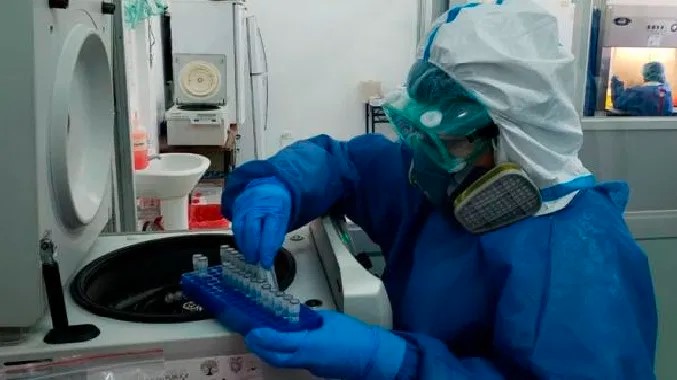
With the purchase of reagents and new equipment, the processing carried out by Inspi is faster. Results are delivered between 48 and 72 hours.
During the first months of the pandemic, the work of the National Institute for Public Health Research (Inspi) for the processing of PCR tests of Covid-19 was intense. Today, it flows in a better way. This was recognized by the technical coordinator, the microbiologist Alfredo Bruno.
The Institute created in 2012 for the development of scientific studies and health technology, as well as for the analysis and diagnosis of infectious diseases, concentrated the work of its staff since March: five in Guayaquil (headquarters), in Quito and in Cuenca. At the moment, there are about 100 officials throughout the country.
With the pandemic, the task begins with the receipt of the samples that arrive from all the provinces. After a review, it goes to the molecular area for the extraction of ribonucleic acid (RNA) from the virus.
At that time, the reagents are mixed, passed to the thermal cycler, and positive or negative results are uploaded to the public health surveillance system (Viepi).
Bruno said that this was already done, but that there was a shortage of reagents or ‘primers’. The first purchase was 100.000 reagents and 94.000 are expected to arrive in 15 days.
The pharmaceutical company Roche delivered a kit, with which the processing capacity was increased.
The technical coordinator indicated that there are no dammed tests and that the results are delivered between 48 and 72 hours. Before, they took a week.
He commented that between the three sites, between 1.500 and 1.600 samples are processed daily. However, the capacity is for 3.000 tests, that is, they work with half the installed equipment. Although they have had days where they did reach maximum levels.
He added that monitoring the behavior of the virus is essential to control the pandemic, because that will allow us to know the efficiency of the vaccine.
«At the moment we could not produce or replicate it, but we know how the virus acts here,» he said.
During August, the number of samples processed dropped.
The global watchword in this pandemic has been to carry out more tests, but in the country the figures from the Ministry of Health do not reflect that trend.
In July 95.041 new samples were collected and a month later 86.676 were taken, so there was a reduction from one month to another.
By the end of July, 14 tests were carried out for every 1.000 people, and by August they barely reached 19 in the country.
When analyzing by province, it is seen that Galapagos tops the list: 50, followed by Morona Santiago with 47 and Carchi 35, with a high prevalence of the virus depending on its population.
Meanwhile, there are eight localities that have less than 19 samples per 1.000 inhabitants. These are: Chimborazo, Los Ríos, Santa Elena, Cotopaxi, Cañar, Guayas, Esmeraldas and Imbabura. The decrease in the number of tests results in a low number of new cases detected and discarded.
Given this, one could not speak of a real fall in infected patients in the last month and more when 35% of the tests carried out are positive.
According to the World Health Organization (WHO), a country should have 5% or less positive to have passed the contagion phase. But in the case of our country, some people died without having undergone a test.


Be the first to comment